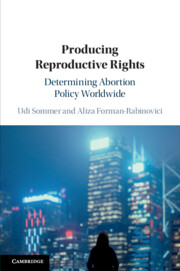Book contents
Part II - State Government Sphere
Published online by Cambridge University Press: 27 July 2019
Summary
Within the sphere of the nation-state we focus on national government as the place where policy is made. We examine dimensions of representation and their implications for abortion policy. That women can offer substantive representation in a democratic environment is well established. However, can women representatives do so under compromised forms of democracy? Extant literature suggests that representation has little meaning in non-democracies. Yet, as less than half of the nearly 3.8 billion women in the world live in democracies, analyzing the connection between women’s descriptive and substantive representation outside of the context of democracy is crucial. We hypothesize that even in nondemocracies and developing democracies, women exercise substantive representation in the sense that their presence in government will positively influence the likelihood of permissive abortion policy. We develop three theoretical frameworks to explain why there might appear to be a connection between descriptive and substantive representation: pandering to international norms; a generally favorable stance toward gender equality; and a focus on regime sustainability, which leads to lenience regarding policy areas where women most commonly exercise influence. We find correlations suggesting substantive representation in nondemocracies, as well as in developing and established democracies. We discuss the findings within the broader scope of dimensions of representation and the influences on abortion policy in the national sphere.Building on the findings in the previous chapter, this chapter uses the case studies of Rwanda and New Zealand to more deeply delve into the influences of representation at the nation-state level.
Keywords
- Type
- Chapter
- Information
- Producing Reproductive RightsDetermining Abortion Policy Worldwide, pp. 79 - 132Publisher: Cambridge University PressPrint publication year: 2019

